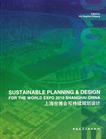上海世博会可持续规划设计
出版时间:2010-10 出版社:中国建筑工业出版社 作者:吴志强 页数:168
Tag标签:无
内容概要
In history, major international events are the natural next steps when the national and urban development reaches a certainstage. Those major international events at the same time provide the countries and cities a strategic and higher platform.The Olympic Games and the World Expo are such major events. In a place where the level of urbanization in a country is very high, that country tends to choose the Olympic Games and the World Expo as major events to enhance the overall development of its socio-economic level, and to promote further growth. Some countries even think that only those who have hosted the Olympic Games and World Expo can truly enter the modern state. Today, the level of urbanization in China is close to 50%, so the 2010 World Expo held in Shanghai, China is a historic choice.Mega urban event may become a catalyst for urban upgrading. Throughout the history of World Expo, in such an age for technology emission and exhibition between nations becoming much more common in daily life, the sign of a successful Expo is no longer whether it displays the latest technologies or echoes the Expo theme, but whether its planning and design is fully integrated into the overall spatial development strategy of the venue city, or whether it will have a positive impact of urban development, becoming a milestone of the development in the city's history as well as a catalyst for urban sustainable development.Shanghai Expo is the first Expo to use 'City" as its theme, thus the planning and design of the Expo site should focus much more on the topic of future urban development. This book documents the sustainable planning and design process of World Expo 2010 Shanghai, interpreting the Expo site as an experiment pilot area for future sustainable city, as space for world urban society, as experiment of future urban ecology life, as restructuring motor of urban economy, as showcase for city renaissance through conservation. The book is divided into eight chapters, interpreting Opportunities and Challenges of Shanghai Expo, Concept of Planning for Urban Sustainability, Master Plan, Eco-Simulation and Planning Optimization,Planning for Social Harmony, Planning for Environmental Harmony, Planning for History-Future Harmony, as well as Controlling and Management System of Planning for Sustainable Shanghai Expo, illustrating Sustainable Planning and Design Technologies of the Expo Site, demonstrating the operation of the future technology of urban sustainable development. Better City, Better Life, should start from urban sustainable planning and design.
书籍目录
ForewordChapter I Shanghai Expo: Opportunities and Challenges1. Background of the World Expo 2010 Shanghai China2. Expo: Mega-Event as an Opportunity for Cities and Countries3. Challenges for Planning Shanghai ExpoChapter II Concept of Planning for Urban Sustainability1. Understanding Planning for Urban Sustainability2. Design for the Balance and Circulation of Urban Eco-SystemChapter III Master Plan of Shanghai Expo Site1. Philosophy within Master Plan2. Master Plan3. Connecting the Two RiversidesChapter IV Eco-Simulation and Planning Optimization1. From Traditional Method to Integrated Approach of Planning for Sustainability2. Design with Computer-Aided Eco-Simulation Sun Radiant Simulation Wind Environment Simulation Noise Impact Simulation3. Comfort-Oriented Assessment and Optimization of PlanningChapter V Planning for Social Harmony1. Community Improvement in Urban Redevelopment2. Place Making for Multi-CultureChapter VI Planning for Environmental Harmony1. Sustainable City Model2. Categorization of the Urban Ecological Techniques3. Ecological Techniques Applied in Shanghai Expo Site Planning Energy Material Water Air LandChapter VII Planning for History-Future Harmony1. Conservation of Historic Industrial Buildings2. Eco-Renovation of Old Buildings3. Design for Future ShanghaiChapter VIII Controlling and Management System of Planning forSustainable Shanghai Expo1. Indicators for "Eco-Expo"2. Design Guidelines for Outdoor Space3. Design Guidelines for Permanent Pavilions4. Visual Management SystemAppendixPostscript
图书封面
图书标签Tags
无
评论、评分、阅读与下载
